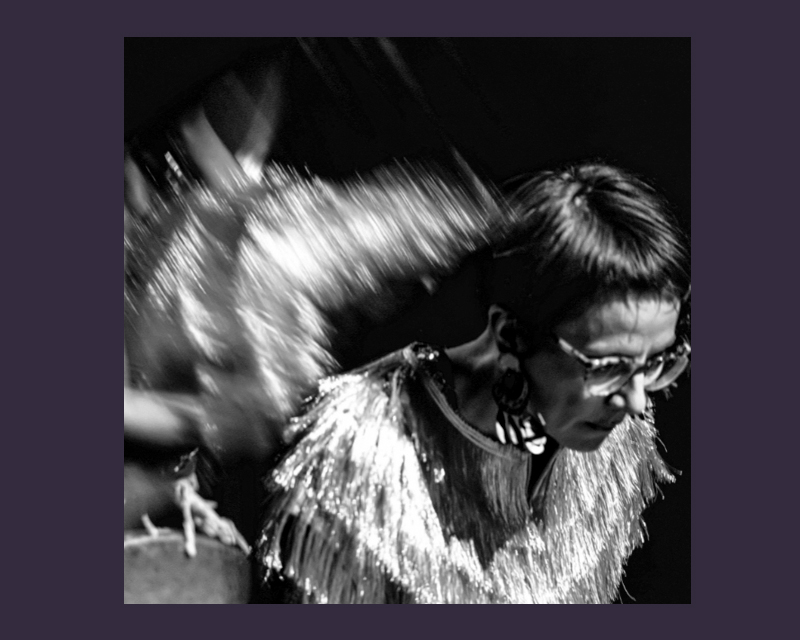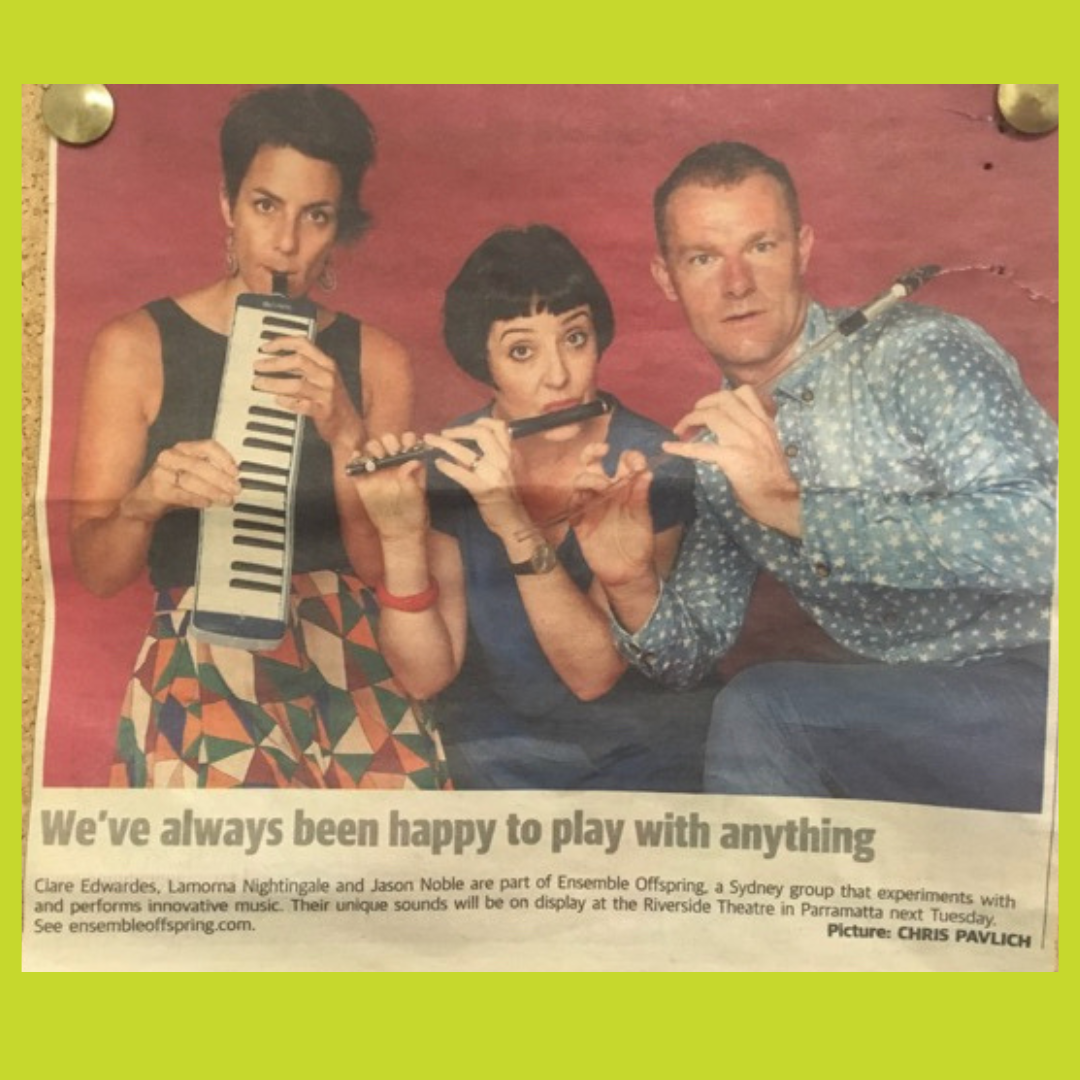
Organisation Profile: Ensemble Offspring
This is Ensemble Offspring’s 30th anniversary. Over this time, it has earned a local and international reputation as the pre-eminent Australian new music group. Multi-award-winning innovative musical trailblazer, they present sometimes provocative and always engaging programs of living new music. Ensemble Offspring takes pride in having commissioned more new works than any other Australian ensemble – that number is 350 and ever growing.
Ensemble Offspring is led by percussionist Claire Edwardes OAM, in collaboration with other daringly experimental instrumentalists, all soloists in their own right: Lamorna Nightingale (flute), Jason Noble (clarinet), Véronique Serret (violin), Blair Harris (cello) and young guest pianist Ronan Apcar (2025 Hatched Emerging Performer).
Ensemble Offspring runs development programs supporting marginalised musical voices including female-identifying, emerging and First Nations artists. Its artistic mission is to navigate the future with open-mindedness and equity for all.
Warm congratulations Claire to you and the Ensemble Offspring gang on this special anniversary. As one of the group’s founding members, what was your original vision?
Ensemble Offspring began simply as a collective of Sydney Conservatorium of Music performance students who were all interested in playing new music by our composer colleagues. This was only unusual in that typically classical musicians do everything they can not to collaborate in that way - but it was also not unusual in that this model has occurred time and time again in conservatories around the world. As a random bunch of young ‘freaks’ who liked playing ‘different’ music, the initial line up included several saxophones, a few trombones, a violin, 2 percussionists, pianos and more. As you can imagine there wasn’t much existing repertoire for this combination, so the founders Damien Ricketson and Matthew Shlomowitz wrote us new pieces and they even got us featured in Roger Woodward’s Sydney Spring Festival to premiere of these new works. We thus became the Spring Ensemble and from 1995 we were the ensemble in residence at that esteemed festival which boasted guests including famous composers like Franco Donatoni and James Dillon. It was such a baptism of fire for us young musicians and for me it sewed a life-long seed of working collaboratively with living composers and being an integral part of the process of the creation of music!

Has the ensembles vision changed over time?
The Spring Ensemble became Ensemble Offspring when the festival folded in 2001. During this time it was still run as a sort of collective with Damien Ricketson garnering project funding for all manner of innovative projects including Partch’s Bastards and a Philip Glass program at the Sydney Opera House. When I returned from my time in The Netherlands in 2006 I helped Damien turn the ensemble into a bit more of a small business, eventually creating a board and not for profit status and garnering multi-year funding from government bodies. This meant that we could dream bigger and start our own annual concert series, tour more and eventually even pay some administrative staff (as well as ourselves eventually – amazing!). I became the sole artistic director in 2016 when Damien decided he had had enough of organising concerts (it’s a hard slog) and for the past 10 years, while I have missed the collaborative nature of how we directed the ensemble together, I have also relished being able to realise a singular vision which has seen us branch out more into helping the next generation (as we get older ourselves) and as a business become as professional as we can (within our financial limitations as always).
Is it unusual for percussion to be the lead instrument/s in an ensemble?
Actually it’s the most common thing in new music ensembles! A few years ago we did an international 3 way collaboration with 2 other new music ensembles from New York and Berlin and both these groups were run by percussionists. Then there is the tradition of percussion ensemble music being an important part of the 20th Century canon and also the fact that percussionists have to be apt at logistics and organisation because what we do includes so many different instruments. I think that’s what makes us good at leading ensembles. At least for me the impetus to lead was always that I wanted to program certain music and composers but more recently it became a practical thing in that I could arrange rehearsal schedules around my needs as a mother – and while it is a huge amount of work I honestly wouldn’t have it any other way!
How did you come together with your fellow musicians and what do they contribute?
We are very lucky in that our core musician line up are all very close friends. We have a lot of fun together and while we take our music making very seriously, we are all on the same page about the fact that if it can’t be fun too, then really what’s the point? While I tend to make the final artistic decisions in rehearsals we do have robust discussions around the direction we may want to take the music in and we also have a Creative Committee that meets 4 times a year where all our core musicians feedback on the pros and cons of recent performances so that we are constantly bettering ourselves and taking on internal and external feedback.

New music is an acquired taste. What role do you see the group playing within the classical music scene in Australia and how do you build audiences?
We see ourselves as the alternative to the mainstream classical music making in this country (ie music by dead white males in the most part). The interesting thing with what we do is that no one concert is the same as the next, so we have to make sure that our audiences can trust in the fact that the standard of presentation will be world-class, they will hear something new that makes them think and feel in different ways, and all the while it will be an enjoyable and accessible experience. It can be a challenge to market our concerts because often the music isn’t even created when we have to start telling people about it but I love a challenge and our audiences seem to relish the excitement that this creates at a show.
Is Australian new music different from what is happening in the northern hemisphere?
Funnily enough new music ensembles all around the world are presenting in similar formats and with similar repertoire to us – and there are loads of them too! We have a dearth of high-profile presentation of new music in this country due to our governments lack of consistent support over the years, which means Ensemble Offspring is an anomaly of sorts. In a perfect world there would be more than one group like ours in every capital city like there are in Germany or The Netherlands. It is therefore important for us to tour internationally and see what our sister ensembles are doing around the world– for example we have been invited to play at Long Play Festival in New York this May and the thing I am most looking forward to is being immersed in all the other groups and artists who are being featured at this epic festival in Brooklyn.
What do you love most about what you do?
On the bad days (when we have been turned down for a funding application for example) I sometimes feel that the struggle to keep a new music ensemble afloat in Sydney is just too much – but on the good days (which is most of the time) I relish the freedom that my chosen career affords me, as well as the opportunity to tour the country and the world playing music I love - and all the while nurturing others while we do that. I also love performing and I have realised in recent times I’m actually pretty good at it too!
If you had your time again is there anything you would do differently?
No absolutely not!
Article by Tamara Winikoff
Tamara Winikoff is an independent consultant with extensive experience in arts advocacy, policy, and cultural leadership. She was a a founding member of the Inner West Creative Network and served as Executive Director of the National Association for the Visual Arts (NAVA) for 22 years, championing artists’ rights and sector development. As Co-convenor of ArtsPeak, she coordinated national arts policy initiatives. Previously, she managed community arts programs at the Australia Council for the Arts and lectured in Cultural Environment and Heritage at Macquarie University. Based in Sydney, she continues to influence the cultural landscape through strategic consultancy.
Photos:
Lead Claire Edwards (Oliver Miller)
1. Archive (supplied)
2. Lamorna Nightingale (Oliver Miller)
